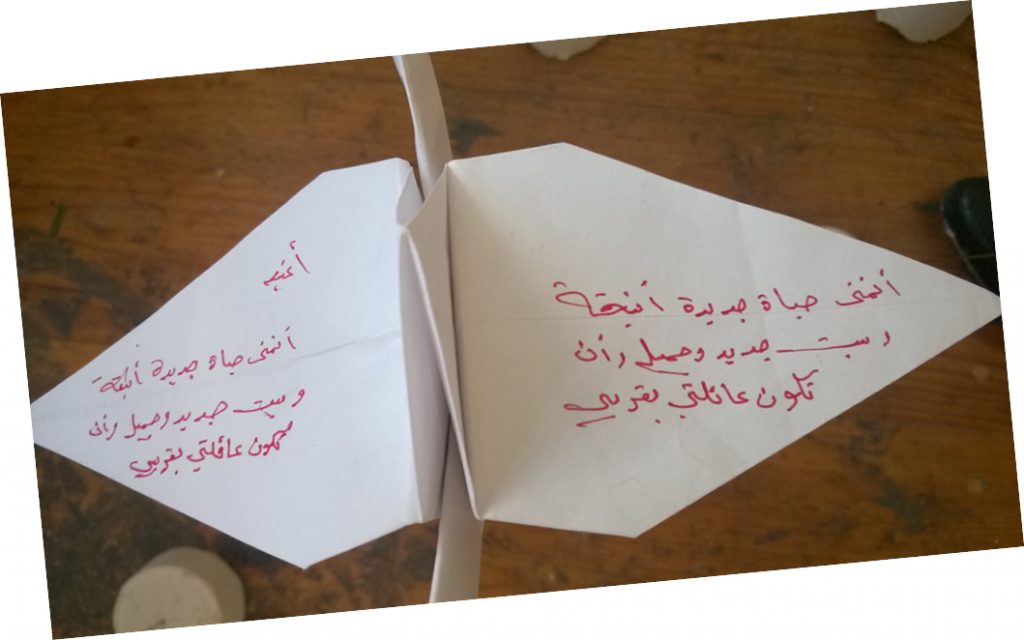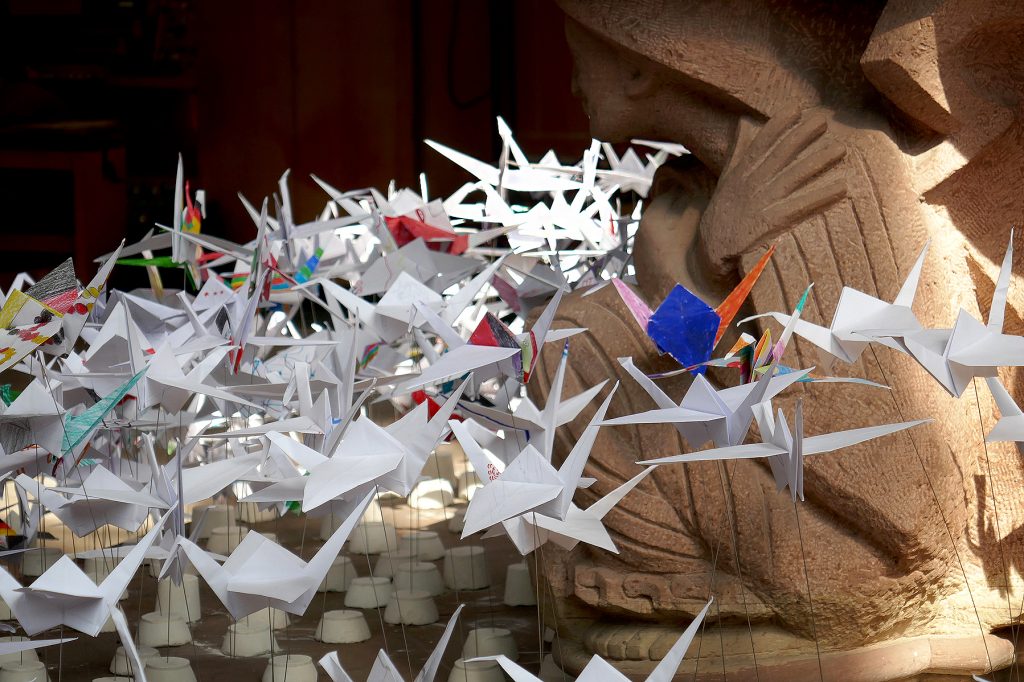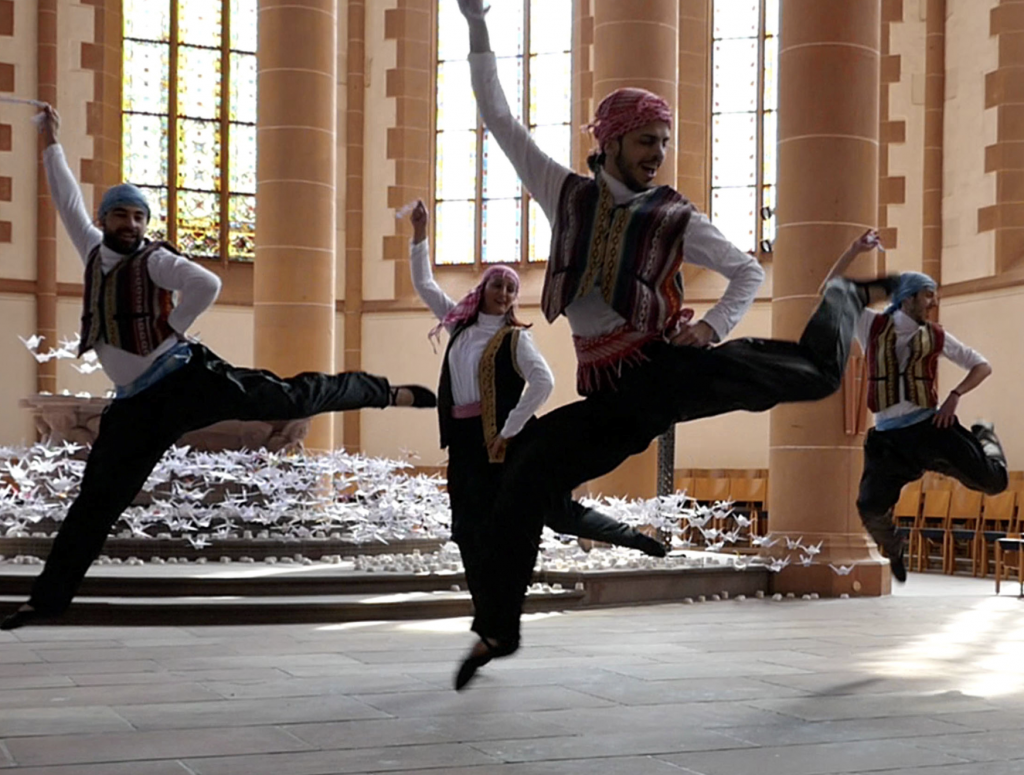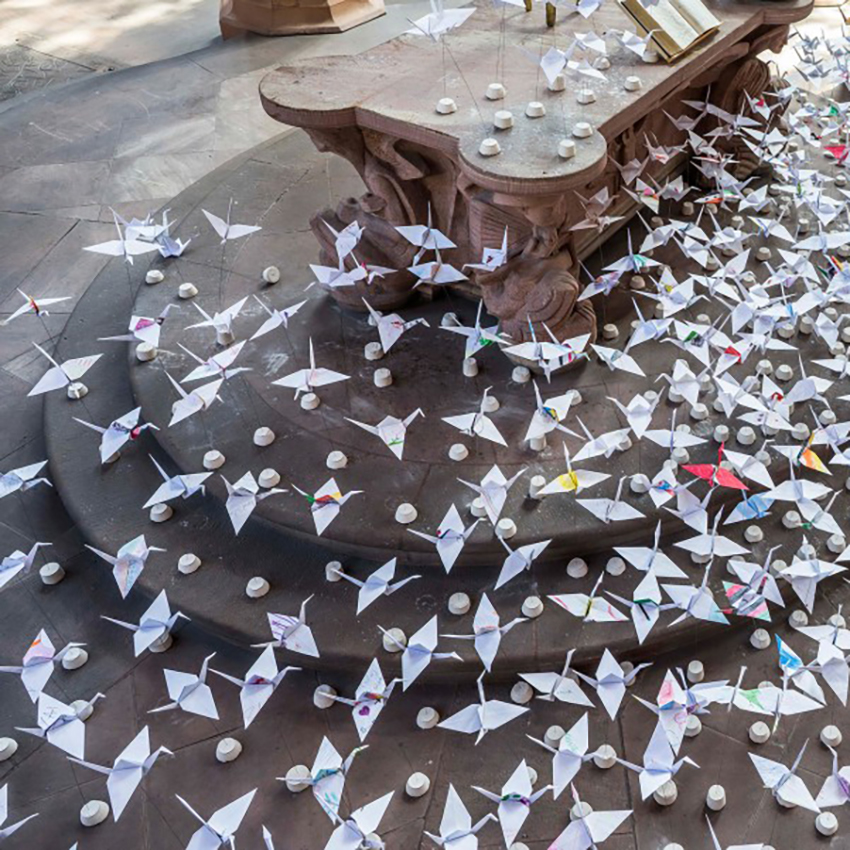Die Objektkünstlerin HADMUT BITTIGER arbeitete über mehrere Monate mit Flüchtlingen in der Moabiter Notunterkunft. Dabei galt ihr Interesse, welchen Wunsch ein Mensch hegt, der aus seinem Land fliehen muss, lange und beschwerlich unterwegs ist und sich einer ungewissen Zukunft gegenübersieht. Sie bat sie, einen Wunsch zu zeichnen.
Es entstanden Bilder der Sehnsucht nach der verlorenen Heimat; Erlebnisse dort oder auf der Flucht; immer wieder Wunschhäuser, ein neues Zuhause mit Gartenbank, Bienenstock, Fahrrad, und im Inneren den Blumenstrauß auf dem Tisch. Oder sie schrieben Sätze wie: „Ich möchte nicht davonrennen, ich möchte nicht einsam sein“. Das bemalte Blatt wurde anschließend in japanischer Origami-Technik zu einem Kranich gefaltet. Diese Papierobjekte, mehrere 100 Exemplare, steckte sie auf bis zu 50 Zentimeter hohe, nadelgleiche Federstähle, so dass sie sich bei der kleinsten Bewegung in der Luft wiegen – als flögen die Papierkraniche wie Zugvögel.

WHERE TO, WHERE TO
According to a Japanese legend everyone who folds 1,000 cranes is granted a wish. In Japan the crane is a symbol for luck and long life. In China it also symbolises wisdom and since ancient times has been know as the bird of luck that embodies vigilence and intelligence. Besided all symbolism these birds can fly distances up to 2,000 kilometers without landing. They communicate through various sounds and journey together, from stage to stage, to their destination. In that way they compare to refugees. People who leave their country like migrating birds take a rest, move on, take a rest and so forth until they reach their destination, take shelter, stay, or return after some time.

But what do people wish for who fled their countries in a weary journey and who face an uncertain future?
That question is the background of Hadmut Bittiger’s installation. For months the object artist has worked together with numerous refugees in the provisional accommodation of the Berliner Stadtmission in Moabit. The refugees were invited to draw or write their wish on paper. These papers were then folded into an origami crane. For most, the wish remained secret, hidden from view in the folds of the crane, like the wishes that stay hidden in a human`s mind. However, not all cranes carry a wish with them. They remain white and unpainted, representing the many people who are fleeing or on the move around the gloube.
The objects – more that 100 altogether – were then put on needle-like spring steel pieces 50 centimeters off the ground. They weigh through the air at the merest movement as if the paper cranes would fly like migrating birds.

Diese Bewegung wurde noch deutlich hervorgehoben durch die syrische Tanzgruppe Gafrana, bestehend aus Geflüchteten, die gerade angekommen waren. Zusammen mit dem Tänzer und Choreographen Manar Youssef entwickelte Hadmut Bittiger eine Performance um Flucht und Ankommen darzustellen, nach einer eigens dafür komponierten Musik von Mohamed Habach.
The movement was strongly evidenced by the Syrian dance group Gafrana, composed of newly arrived refugees. Together with dancer and choreographer Manar Youssef, Hadmut Bittiger developed a performance depicting flight and arrival to the accompaniment of music composed especially by Mohamed Habach.
WOHIN, WOHIN
WHERE TO, WHERE TO
Installation
2015–2017
800 Kraniche mit Originalzeichnungen von Geflüchteten, cranes with original drawings by refugees
Material: Papier, Federstahl, paper, spring steel
Fotos: Udo Lahm
Weitere Informationen zu WOHIN, WOHIN siehe unter › AUSSTELLUNGEN
